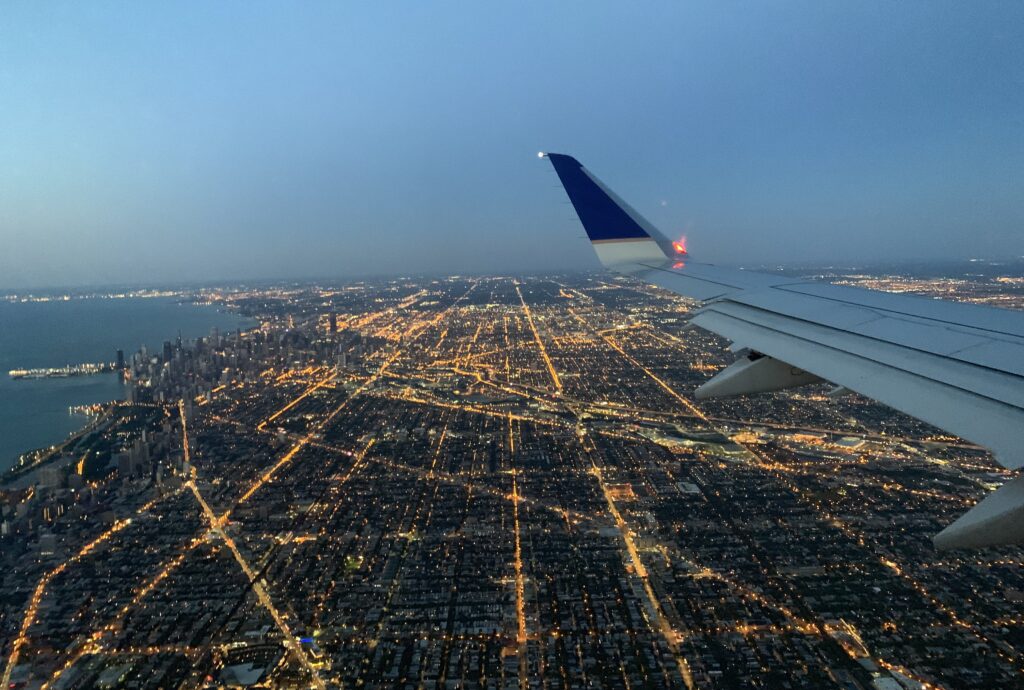
Are you going on a trip with your Sony camera and looking for a new lens? Sorting through the host of lens options can leave your head spinning. From zoom lenses versus prime lenses to different aperture sizes and focal lengths— there are tons of factors to consider. I have used a total of 10 different lenses over the last several years for my photography endeavors and this article lays out my picks for the best Sony lenses for travel photography.
If you use a Canon or Nikon platform for your travel photography, check our lists of the best Canon lenses and best Nikon lenses for travel. If you need something more compact than DSLR or mirrorless cameras with interchangeable lenses, check out our list of the best point and shoot cameras for travel photography.
A Quick Review of Some Photography Terms:
Just in case you need a refresher on some photography lingo, here are some important terms to know when purchasing a lens in order to understand the tradeoffs you might be making:
- FOCAL LENGTH: focal length is the distance between the focal point (where the light captured by the lens converges into a focused image) and the sensor of the camera. It is measured in millimeters. A longer focal length will be more “zoomed in” where as a shorter focal length will be more zoomed out.
- APERTURE: aperture size is measured with the f/stop. F/stop is actually a ratio between the length of the lens focal length and the diameter of the aperture opening. You may have seen it as something like f/1.4. This is an abbreviation and the full way to write this is as f 1/1.4, with the 1 representing the length of the focal length and the 1.4 representing the diameter of the aperture. This means that the lower the f/stop number (i.e. f/2.8 versus f/1.4), the wider the aperture. Additionally, halving of the f/stop represents a doubling of the level of exposure. So for example, f/1.4 will result in twice the exposure of f/2.8. Wide apertures do two things: 1, allow more light to hit the sensor, increasing the exposure, and 2, create a more shallow depth of field, which is the amount of space in focus. This is a large contributor to the amount of bokeh, or background blur, present in a photograph.
- ISO: This term originates from film photography, where an ISO level was fixed for each type of film. Higher ISO meant a higher level of exposure on an image. In digital cameras today, ISO is actually a form of in-camera post processing. Increasing your ISO may increase the exposure of your image without having to change the other settings, but it also runs the risk of making your photo extremely grainy. I recommend that you increase ISO only as a last resort when taking a photo.
- STOP (OF EXPOSURE): a stop of exposure is a relative measurement of the amount of light that the sensor is being exposed to. An increase of one stop of exposure equates to a doubling of the amount of light hitting the sensor, and a decrease of one stop of light equates to a halving of the amount of light hitting the sensor.
My picks for the 6 best Sony lenses for travel photography:
Overall Best Sony Lens for Travel Photography:

Sony FE 24-70mm f/2.8 GM II
The Sony FE 24-70mm F2.8 GM II lens is incredibly popular for good reason. The lens’ focal length allows for extreme versatility while also allowing for a wide enough aperture for low-light shots.
This lens will also give you the background-foreground compression of a telephoto lens for dramatic scenes and flattering travel portraits. As far as performance, image quality is unmatched and the autofocus is precise and fast.
When taking travel photos, I want something that gives me a lot of options. I find the wider angle lenses in the 24mm to 40 mm range tend to be best for things like travel portraits and street photography because they include more of the environment in the photograph without having to get extremely far away.
The downside of this lens is its size and weight. The Sony FE 24-70mm F2.8 GM II weighs about 1.5 lbs. This may add an unwanted burden while in transit during your travels or on hikes.
In my opinion however, the functionality is well worth it. But if you’re traveling light, you may want to choose a prime lens instead.
There is also a budget version available from Sigma, which will run you a little less than $1000.
Pros:
- Can zoom between wide angle (24 mm) and telephoto (70 mm)
- Good low-light performance due to the f/2.8 aperture
- Crystal clear image quality
- Built-in Image Stabilization
Cons:
- Pricey
- Heavy (nearly 1.5 lbs)
Overall Best Prime Lens for Travel Photography:
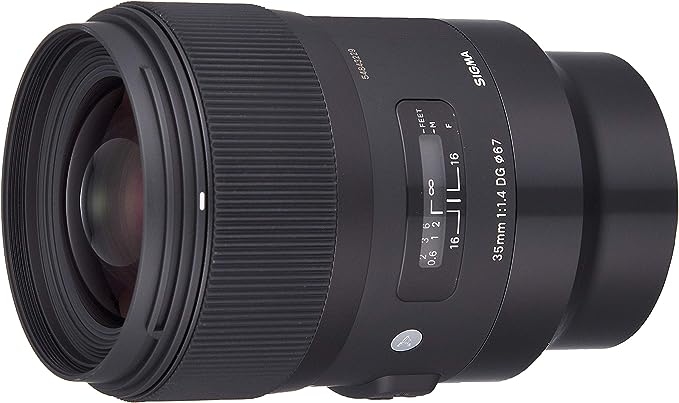
Sigma 35mm f/1.4 Art DG HSM for Sony E
Staying true to Sigma’s reputation of bringing high quality at affordable prices, this lens clocks in under $1000 – an excellent price for a premium lens. This lens packs a punch. The super versatile 35 mm focal length and the f/1.4 max aperture allows for a super shallow depth of field.
The lens also has excellent low light performance and you should be able to use this lens for almost any travel photography task. The weight on this lens is 1.46 lbs which is a bit on the heavier side, so it may not be the best option if you are looking to travel light. But for what you’re getting in terms of performance, the camera’s weight shouldn’t be a dealbreaker.
Pros:
- Shallow depth of field (very blurry background)
- Excellent low light performance
- Under $1000
Cons:
- Heavy (1.46 lbs)
- Fixed focal length (unable to zoom)
- Not weather sealed
Best Budget Sony Zoom Lens for Travel Photography:
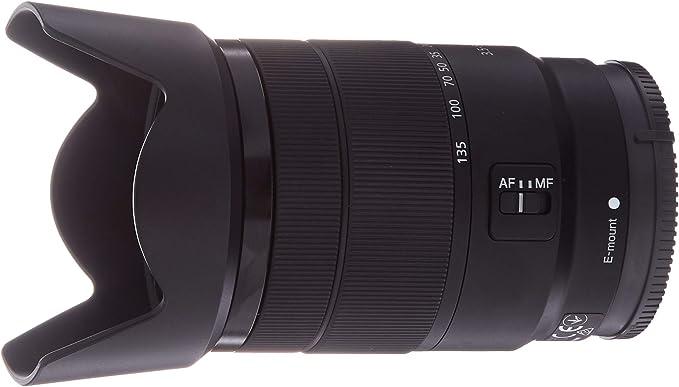
Sony 18-135mm f/3.5-5.6 Lens
The Sony 18-135mm F3.5-5.6 lens is hands down the best Sony travel lens under $500. The focal length variability is borderline shocking- with the ultra-wide angle 18 mm length to the telephoto being at 135 mm. This is more than enough for practically any task. Its variable aperture of f/3.5 to f/5.6 will be adequate for brighter lighting conditions. You should be able to get good photos in slightly darker conditions too though, since this lens has built-in image stabilization.
Pros:
- Massive zoom range
- Under $500
- Built-in image stabilization for clear shots in lowlight
Cons:
- Limited aperture
- Made for Crop Sensor Cameras
Best Budget Sony Prime Lens for Travel Photography:

Sony E 35mm f/1.8 Prime Lens
The Sony E 35mm F1.8 Prime lens is one of my all-time favorite lenses. The photo quality is excellent. The 35 mm focal length is the most versatile focal length and the super wide f/1.8 aperture allows you to shoot in virtually any lighting conditions. The lens is fairly compact which makes for easy travel.
What’s even better is that this lens costs just under $500. Hard to beat in my opinion.
Pros:
- Versatile Focal Length
- Excellent low-light performance
- Affordable
- Compact
- Shallow depth of field (blurry background)
Cons:
- Fixed focal length (unable to zoom)
- Not weather sealed
Best Sony Lens for Landscape Photography:

Sony FE 16-35mm f/2.8 GM II
While photographing landscapes in the past, I’ve often found myself wishing I had a wider lens. Wide lenses are ideal for landscape photography because they give the camera a larger field of view than the human eye is capable of. This widened effect is excellent for capturing the vastness of a landscape scene.
The best Sony lens for landscape photography is the wide-angle Sony FE 16-35mm F2.8 GM II lens. Whether shooting on a hike or capturing a cityscape, this lens perfectly preserves every micro-detail of a landscape scene.
The f/2.8 maximum aperture is more than enough for shooting landscapes in darker lighting conditions as well, and any night time or low-light photography can be done with a tripod, eliminating the need for an ultra wide (and expensive) f-stop.
This lens is also fairly light for its size at only 1.08 lbs. This makes it an excellent choice if you’re looking for portability.
Paired with a high-megapixel sensor such as the one in the mirrorless Sony Alpha 7R V, you will be able to greatly crop in your images if needed as well as print your landscape photos in large format while maintaining perfectly crisp detail.
Pros:
- Wide angle focal length
- Variable zoom
- Excellent image quality
- Lightweight (1.08 lb)
Cons:
- Pricey (over $2000)
Telephoto Lenses for Landscape Photography:
Some photographers, including famous landscape photographer Peter Lik, will elect to use telephoto lenses in the 200-800mm focal length to create a unique compression distortion on a landscape scene. Compression is where the background and foreground look much closer together than they actually are. This technique is responsible for photos you may have seen where the moon looks giant relative to a person, tree, or other object in the foreground. The moon actually hasn’t been edited to look giant. Rather, the photo was taken from very far away from the foreground object, and so from that distance, the moon looks much larger relative to the object.
To illustrate, here is a photo I took of a Peter Lik print titled “Bella Luna”:
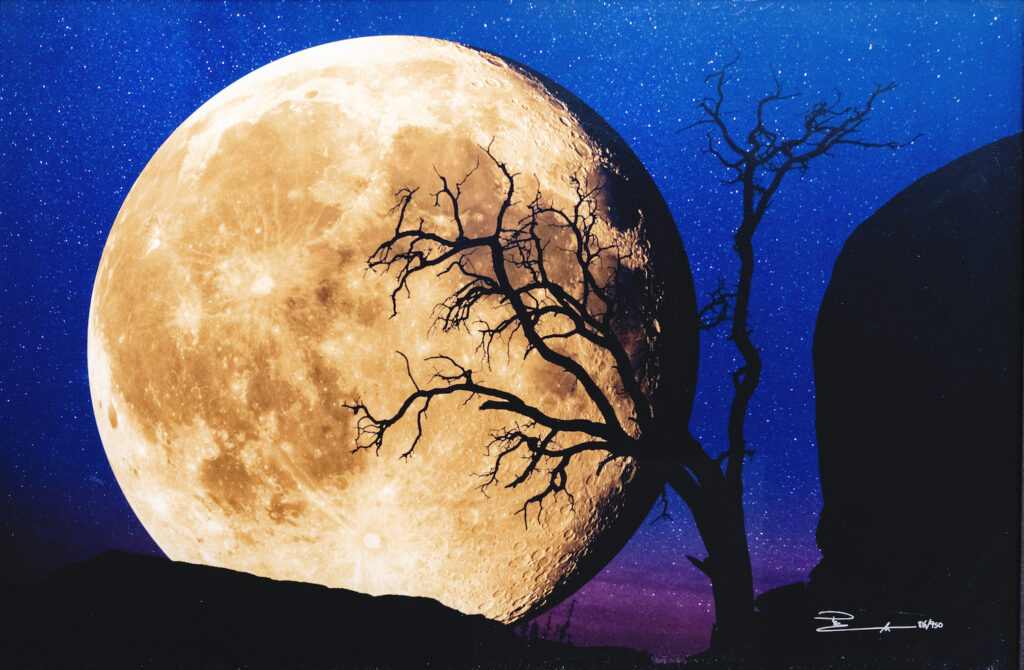
In my experience, most people will want to use a wide-angle lens for a majority of their landscape photography endeavors. If you are trying to execute specific shots that require compression, however, you may want to invest in a telephoto lens. Ultimately it’s up to you. Here are a few telephoto lenses at various price points:
Best Weather Sealed Sony Lens for Travel Photography:
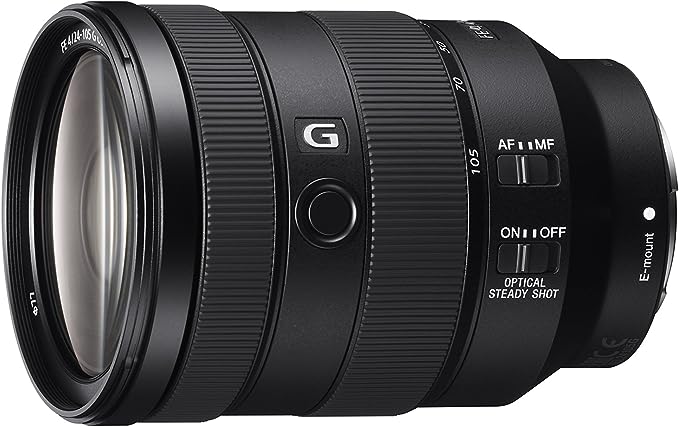
Sony FE 24-105mm f/4 G Lens
The Sony FE 24-105mm F4 G lens is weather-sealed and comes with a huge focal length range and a respectable f/4 minimum aperture. It also comes with a powerful image stabilization system, making it much easier to shoot at slower shutter speeds. I based this my final pick for best weather sealed lens off of two assumptions:
- Bad weather that would warrant a weather sealing will also imply a darker scene, meaning the max aperture needs to be wide. Though f/4 is not the widest, the image stabilization makes up for that
- This lens can’t be too expensive, as bad weather implies increased danger of camera drops. While ~$1,300 is certainly not cheap, it is a much more affordable price than the $2,200+ of the Sony FE 24-70mm F2.8 GM II.
Pros:
- Excellent weather sealing
- Excellent autofocus speed and precision
- Image stabilization (no blur even at slow shutter speeds)
- Moderate price for value
Cons:
- Heavy (1.46 lbs)
- Still may be out of the budget range
- f/4 focal length can be limiting in low-light conditions


